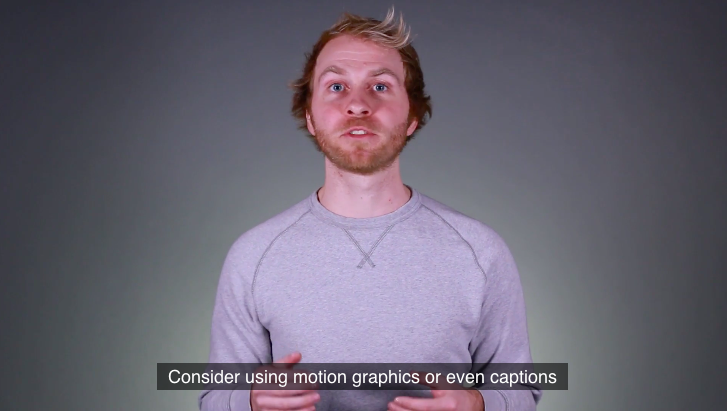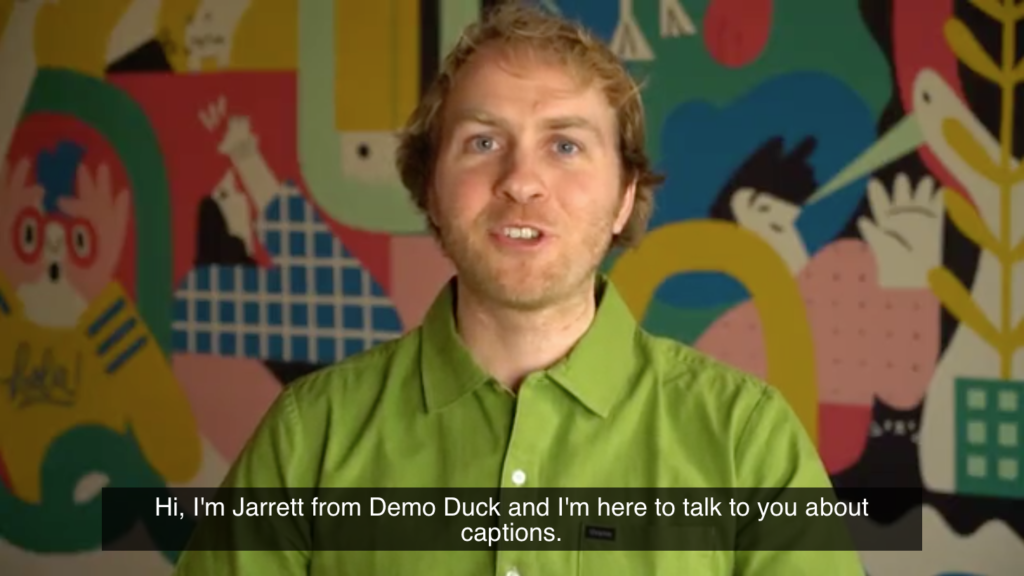When it comes to recent video projects, captions are the equivalent of where I bought band t-shirts as a moody teenager in 1999.
A Hot Topic.
We have more platforms than ever to connect with audiences through video. And with more platforms come more variables to consider when producing video, especially when it comes to captions. For example, YouTube allows closed captions, but Instagram does not. If you want to create captioned video to live on both, how do you avoid potential cross-channel caption confusion at the end of a project?
The key is to plan for captions early as possible in the production process.
Maybe this is the first marketing video you’re creating for your small business, perhaps you’ve created hundreds of explainer videos but have yet to tackle captions, or you’re just curious about captions in general. So let’s back up a little. What are the different kinds? Why even use them? Well, put on your favorite 2000s band (shouts out Incubus) and let’s get into it.
A Captions Rundown
Closed captions are the approach that you’re probably most familiar with seeing. They’re the small, black boxes that traditionally feature white text within them. You’ve seen them on TV when watching your favorite team lose at a loud bar, or on social sites like YouTube, Wistia and Facebook. Closed captions can be turned on and off by the viewer, and can easily be modified within the video file (more on that later). With this flexibility also comes some limitations. Closed captions only work if they’re supported by the platform, and put some responsibility on the viewer to operate them if that platform doesn’t enable them by default.

Hey, the handsome guy on screen has a point.
Open captions, on the other hand, are captions that are permanently in the video file. They cannot be turned on and off, like closed captions can. Open captions are often referred to as being “burned in.” They give you a certain element of control—you know that the captions will be visible no matter where they appear, and you can choose their font and color. But open captions can be restrictive too. Say you wanted to reformat a landscape video (with open captions) to vertical orientation for an Instagram story. The permanent captions could now be partially cut off on-screen.
You may be wondering—what’s the difference between captions and subtitles? Well, subtitles are different than captions because they are an alternative to the dialogue being spoken aloud on screen. They’re usually of a different language than the audio, and can include action notes or notifications and descriptions of non-speech sounds.
Perhaps the cousin of captions is the use of text on-screen, like kinetic typography. This approach allows you to emphasize key lines of the script, while using colors and fonts to evoke the emotions behind the words. However, these are best used as part of a larger creative concept, and not a solve to help with accessibility.
Why We Use Captions
Traditionally, captions are used to improve accessibility. About 20 percent of Americans have some degree of hearing loss, so it’s important to give them the option. Some entities—including US federal offices and universities—are required by the American Disabilities Act, or ADA, to caption any video content that they share. For most short form video projects, Demo Duck provides closed captions files to our clients free of charge for accessibility reasons. They’re easy to create, and give the client some flexibility of how they use them.
But now in the auto-muted world of social media, audiences may be viewing your video content without sound by default. Or, maybe they are watching it on their smartphone during their commute and forgot their headphones. In addition to helping with accessibility, captions are now a way to adapt to the creative constraints put in place by a platform itself. What good is creating a well-produced piece of video content if your message isn’t communicated—either by sound or by caption?
Captions and the Production Process
Captions are quite helpful in a variety of ways. But how do they show up in the video you’re watching?
When creating a video with closed captions, we’ll take the approved script for the video and format the text into an .SRT file. Each captions is organized within a “trigger,” a set amount of time when the caption will be displayed on screen. We’ll then deliver the .SRT file to you along with the final video file (traditionally a .mp4 or .mov) once the project is finished. When you go to upload the video to a platform that supports closed captions, you’ll upload the .SRT file as well.
Creating open captions for a video is easy if they are part of the project from the start. Retrofitting them after a project is finished is where things get tricky. The lower third of a frame, where captions are displayed, is prime real estate. Maybe in that area there’s already some tiny characters. Or important scene-setting elements. Or even a logo on display! Adding open captions on top of a finished product risks overlapping important parts of your video.
When we typically kick off a project, we work with our clients to determine where the videos will eventually live. This helps to give everyone a better sense of how we should caption. If a video is going to be used, say, in a trade show booth at a busy, noisy conference center, we can decide together to go with open captions. That way, every asset—from storyboards to styleframes—can be designed with this in mind.
An Open Ending
Captions are a hot topic indeed, and that isn’t a bad thing. Not only do they help with accessibility for audiences, they can also make sure your message breaks through in a busy social media stream. Also, captions aren’t necessarily cumbersome to a viewer, even if they don’t need them. Maybe this is a blog post for another day, but popular culture might be making audiences more comfortable with text on screen. From the popularity of subtitled anime, diversity of favorite meme formats, and the joy of sharing frames of .GIFs from our favorite shows or movies—it’s important to consider the changing way of how we process static or moving images. But as always, text on-screen—in our case, captions—are used most effectively once you have a firm understanding of your audience and the platform your video will live.
By approaching a video project with that mindset, a Hot Topic can become a Sam Goody. Just don’t forget that you’re Limited Too constraints of platform where the video is shared. Oh boy. Maybe I should just put my AIM away message on and get out of here…
